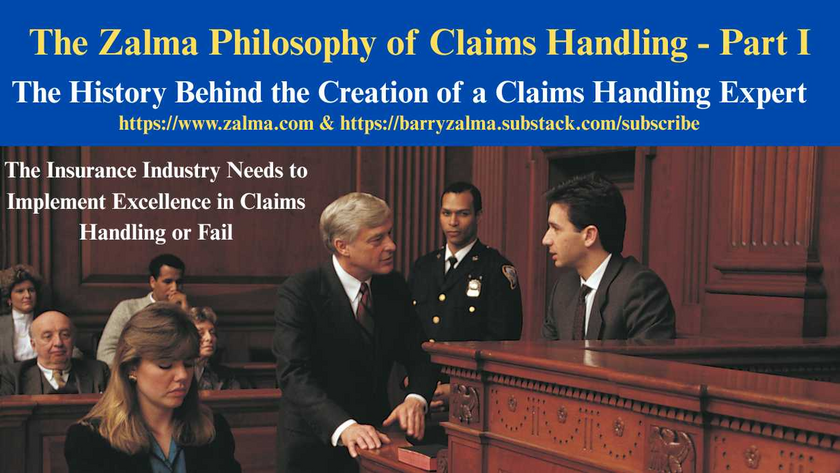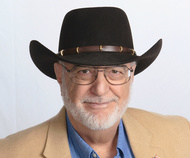
Reference to Defendant’s Need to Pay is not Inappropriate Mention of Insurance
Barry Zalma
Oct 17, 2023
Read the full article at https://lnkd.in/ghX3Ag3k and see the full video at https://lnkd.in/gH8xx6Ru and at https://lnkd.in/ge63B4Y9 and at https://zalma.com/blog plus more than 4600 posts. https://lnkd.in/gH8xx6Ru and at https://lnkd.in/ge63B4Y9 and at https://zalma.com/blog plus more than 4600 posts.
When I was a young adjuster 55 years ago California and every state allowed a plaintiff’s contributory negligence – no matter how small – to defeat a negligence claims. In 1975 Li v. Yellow Cab Co., 13 Cal.3d 804, 119 Cal.Rptr. 858, 532 P.2d 1226, 78 A.L.R.3d 393 (Cal. 1975) established the system of contributory negligence that has been followed in most states. Maryland, however, still applied contributory negligence and has refused to adopt comparative negligence.
In Michael Lewis v. Pedro Romero, No. 1932-2022, Court of Special Appeals of Maryland (October 10, 2023) Mr. Lewis lost his negligence action against Mr. Romero whose vehicle struck pedestrian Mr. Lewis in a bank parking lot.
Michael Lewis (“Lewis”) sued Pedro Romero (“Romero”) for negligence. Ultimately, the jury found that while Romero was negligent, Lewis was contributorily negligent, barring Lewis from recovering damages.
FACTUAL BACKGROUND
The incident occurred on October 9, 2019, outside of the Capital One Bank (the “bank”) in Frederick, Maryland. The bank has two points of access for vehicles. There is a one-way, single lane road spanning the perimeter of the bank with painted one-way arrows. This road does not have any crosswalks. Both parties agreed that on the date of the incident, Romero was driving a pickup truck on the one-way road around the perimeter of the bank when he struck Lewis, a pedestrian, who was exiting the bank.
Lewis testified that he walked on foot from a nearby hotel where he was staying to the bank in order to withdraw money. Lewis admitted that at the time of the impact, his cell phone was in his hand. However, Lewis denied that he was talking on the phone at the time he was struck by Romero’s vehicle.
ANALYSIS
On the issue of contributory negligence when measuring contributory negligence, the standard of care is the conduct of an ordinarily prudent person under circumstances ordinarily. The court found that Romero met their burden of production regarding contributory negligence and that is that Romero has introduced more than a mere scintilla of evidence meaning more than a surmised possibility or conjecture that Lewis has been guilty of negligence and that Romero generated a jury issue.
During closing argument, after discussing Lewis’ alleged damages, Romero’s counsel stated, “[Lewis] is asking you to award him [money] for the choices he has made. He wants Mr. Romero to pay him for some of these choices.” The court denied Lewis’ motion for mistrial. The jury returned a verdict, finding that while Romero was negligent, Lewis was contributorily negligent, barring Lewis from any recovery.
DISCUSSION
Maryland follows the majority rule that evidence of insurance on the part of a defendant is generally inadmissible. The Supreme Court of Maryland has also held that a mere inference that there may be insurance would not necessarily require a termination of the trial.
Romero’s counsel made an ambiguous comment during closing argument that Lewis wanted “Romero to pay him for some of [his] choices.” There is nothing in the record to suggest that the comment surpassed the threshold of being an improper statement that warranted further consideration.
WHAT IS CONTRIBUTORY NEGLIGENCE?
Contributory negligence occurs whenever the injured person acts or fails to act in a manner consistent with the knowledge or appreciation, actual or implied, of the danger or injury that his or her conduct involves. Contributory negligence is defined as the doing of something that a person of ordinary prudence would not do, or the failure to do something that a person of ordinary prudence would do, under the circumstances.
The question of whether the plaintiff has been contributorily negligent is ordinarily for the jury to decide. To find contributory negligence as a matter of law, the injured party’s action must be distinctive, prominent, and decisive from which reasonable minds would not differ as to the negligent character.
The case was properly submitted to the jury because, even when viewing the facts in the light most favorable to Lewis, the evidence establishing his contributory negligence amounted to more than surmise, possibility, or conjecture. Lewis’ decision to leave the sidewalk and walk mid-way into the road while only glancing for oncoming traffic constituted a distinctive, prominent, and decisive decision from which the jury could find that Lewis was contributorily negligent. Notably, Lewis’ testimony that he was “hit from behind” on a one-way road indicates that he was facing away from oncoming traffic and not looking for vehicles coming in his direction. Upon these facts, the appellate court concluded that the trial court properly submitted the question of contributory negligence to the jury.
ZALMA OPINION
The application of Contributory Negligence as an absolute defense to a negligence cause of action is considered, in most states, to be Draconian and that comparative negligence is fair and reasonable. Maryland is in the minority. That Maryland continues to apply the common law is appropriate and since the jury found both parties to be negligent Mr. Lewis recovered nothing from his suit.
(c) 2023 Barry Zalma & ClaimSchool, Inc.
Please tell your friends and colleagues about this blog and the videos and let them subscribe to the blog and the videos.
Subscribe to Excellence in Claims Handling at locals.com at https://zalmaoninsurance.locals.com/subscribe or at substack at https://barryzalma.substack.com/publish/post/107007808
Go to Newsbreak.com https://www.newsbreak.com/@c/1653419?s=01
Follow me on LinkedIn: http://www.linkedin.com/comm/mynetwork/discovery-see-all...
Daily articles are published at https://zalma.substack.com.
Go to the podcast Zalma On Insurance at https://podcasters.spotify.com/pod/show/barry-zalma/support; Go to Barry Zalma videos at Rumble.com at https://rumble.com/c/c-262921; Go to Barry Zalma on YouTube- https://www.youtube.com/channel/UCysiZklEtxZsSF9DfC0Expg; Go to the Insurance Claims Library – http://zalma.com/blog/insurance-claims-l
Please tell your friends and colleagues about this blog and the videos and let them subscribe to the blog and the videos.
Newsbreak https://lnkd.in/g8azKc34
Subscribe to substack at https://lnkd.in/gcZKhG6g;
Go to the Insurance Claims Library – https://lnkd.in/gziTwddb
Louisiana Statute Prevents Enforcement of Contract Term Requiring Arbitration of Disputes
Post 5241
Read the full article at https://www.linkedin.com/pulse/international-convention-requiring-enforcement-award-barry-sttdc, see the video at and at and at https://zalma.com/blog plus more than 5200 posts.
In Town of Vinton v. Indian Harbor Insurance Company, Nos. 24-30035, 24-30748, 24-30749, 24-30750, 24-30751, 24-30756, 24-30757, United States Court of Appeals, Fifth Circuit (December 8, 2025) municipal entities including the Town of Vinton, et al sued domestic insurers after dismissing foreign insurers with prejudice. The insurers sought arbitration under the Convention on the Recognition and Enforcement of Foreign Arbitral Awards (the “Convention”) but the court held Louisiana law — prohibiting arbitration clauses in such policies—controls, as the Convention does not apply absent foreign parties who ...
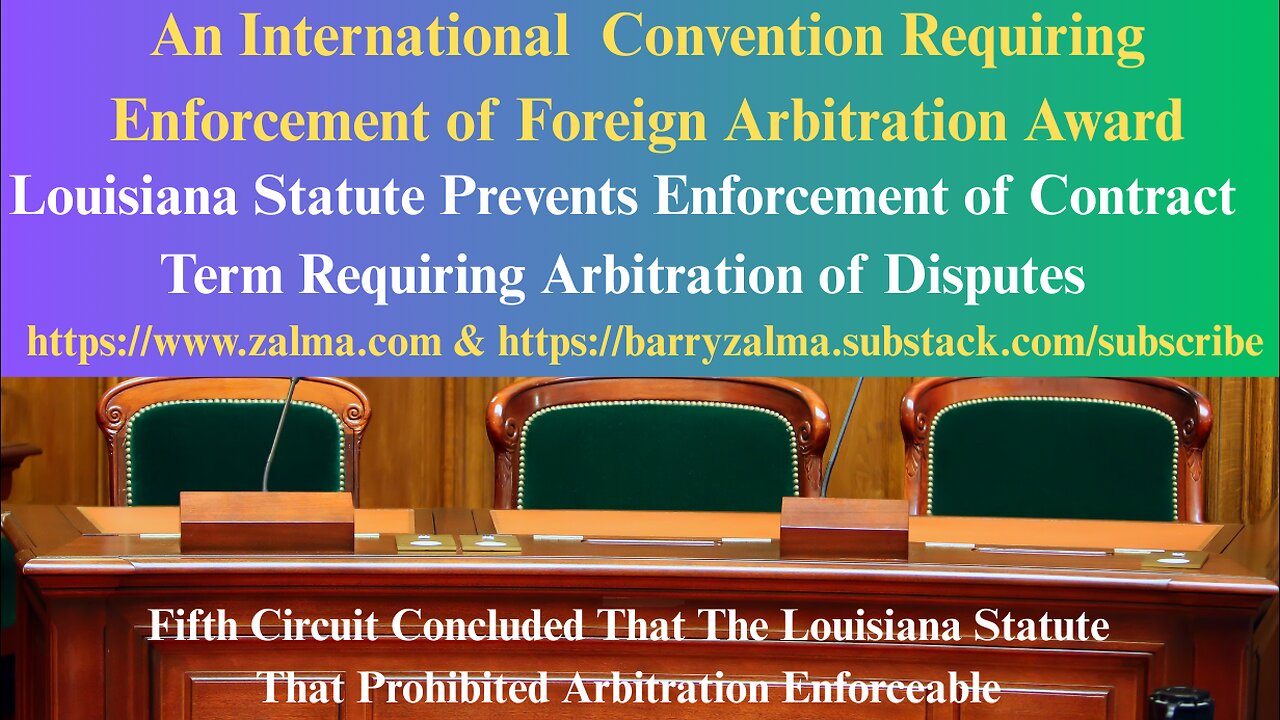
Refusal to Provide Workers’ Compensation is Expensive
Post 5240
Read the full article at https://lnkd.in/guC9dnqA, see the video at https://lnkd.in/gVxz-qmk and at https://lnkd.in/gUTAnCZw, and at https://zalma.com/blog plus more than 5200 posts.
In Illinois Department of Insurance, Insurance Compliance Department v.USA Water And Fire Restoration, Inc., And Nicholas Pacella, Individually And As Officer, Nos. 23WC021808, 18INC00228, No. 25IWCC0467, the Illinois Department of Insurance (Petitioner) initiated an investigation after the Injured Workers’ Benefit Fund (IWBF) was added to a pending workers’ compensation claim. The claim alleged a work-related injury during employment with the Respondents who failed to maintain workers’ compensation Insurance.
Company Overview:
USA Water & Fire Restoration, Inc. was incorporated on January 17, 2014, and dissolved on June 14, 2019, for failure to file annual reports and pay franchise taxes. It then operated under assumed names including USA Board Up & Glass Co. and USA Plumbing and Sewer. The business ...
Arsonist Incompetently Moves Pro Se to Avoid Prison
Post 5239
Read the full article at https://lnkd.in/gRX8TfKn, see the video at https://lnkd.in/gY3Jvnqp and at https://lnkd.in/gRCaaf-3, and at https://zalma.com/blog plus more than 5200 posts.
In Christopher A. Barosh v. Morris Houser, et al., Civ. No. 22-0769, United States District Court, E.D. Pennsylvania (November 25, 2025) a convicted arsonist and insurance fraudster moved the USDC acting in Pro se filed Objections to Magistrate Judge Reid’s Recommendation that the US District Judge dismiss his § 2254 Petition to avoid jail.
BACKGROUND
In October 2005, Barosh set fire to his girlfriend’s Philadelphia home — some 25 hours before the cancellation of the property’s insurance policy. Several witnesses saw Barosh leaving the property shortly before the fire erupted. After the fire, Barosh made “two separate admissions of guilt.”
He attempted to pay an acquaintance to provide him with an alibi for the time of the arson. The eyewitnesses, brother, and ...
The Professional Claims Handler
Post 5219
Posted on October 31, 2025 by Barry Zalma
An Insurance claims professionals should be a person who:
Can read and understand the insurance policies issued by the insurer.
Understands the promises made by the policy.
Understand their obligation, as an insurer’s claims staff, to fulfill the promises made.
Are competent investigators.
Have empathy and recognize the difference between empathy and sympathy.
Understand medicine relating to traumatic injuries and are sufficiently versed in tort law to deal with lawyers as equals.
Understand how to repair damage to real and personal property and the value of the repairs or the property.
Understand how to negotiate a fair and reasonable settlement with the insured that is fair and reasonable to both the insured and the insurer.
How to Create Claims Professionals
To avoid fraudulent claims, claims of breach of contract, bad faith, punitive damages, unresolved losses, and to make a profit, insurers ...
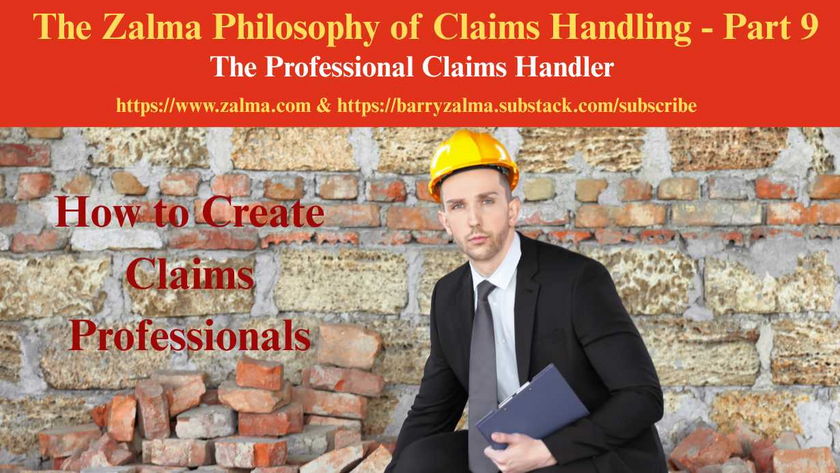
The History Behind the Creation of a Claims Handling Expert
The Insurance Industry Needs to Implement Excellence in Claims Handling or Fail
Post 5210
This is a change from my normal blog postings. It is my attempt. in more than one post, to explain the need for professional claims representatives who comply with the basic custom and practice of the insurance industry. This statement of my philosophy on claims handling starts with my history as a claims adjuster, insurance defense and coverage lawyer and insurance claims handling expert.
My Training to be an Insurance Claims Adjuster
When I was discharged from the US Army in 1967 I was hired as an insurance adjuster trainee by a professional and well respected insurance company. The insurer took a chance on me because I had been an Army Intelligence Investigator for my three years in the military and could use that training and experience to be a basis to become a professional insurance adjuster.
I was initially sat at a desk reading a text-book on insurance ...
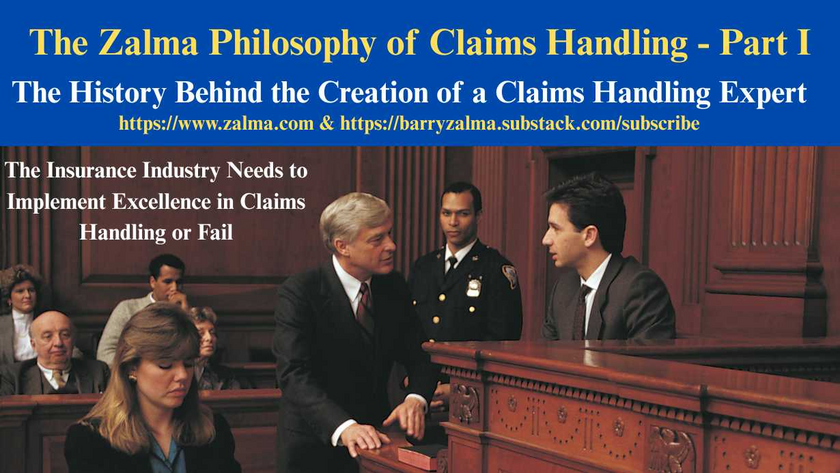
The History Behind the Creation of a Claims Handling Expert
The Insurance Industry Needs to Implement Excellence in Claims Handling or Fail
Post 5210
This is a change from my normal blog postings. It is my attempt. in more than one post, to explain the need for professional claims representatives who comply with the basic custom and practice of the insurance industry. This statement of my philosophy on claims handling starts with my history as a claims adjuster, insurance defense and coverage lawyer and insurance claims handling expert.
My Training to be an Insurance Claims Adjuster
When I was discharged from the US Army in 1967 I was hired as an insurance adjuster trainee by a professional and well respected insurance company. The insurer took a chance on me because I had been an Army Intelligence Investigator for my three years in the military and could use that training and experience to be a basis to become a professional insurance adjuster.
I was initially sat at a desk reading a text-book on insurance ...
